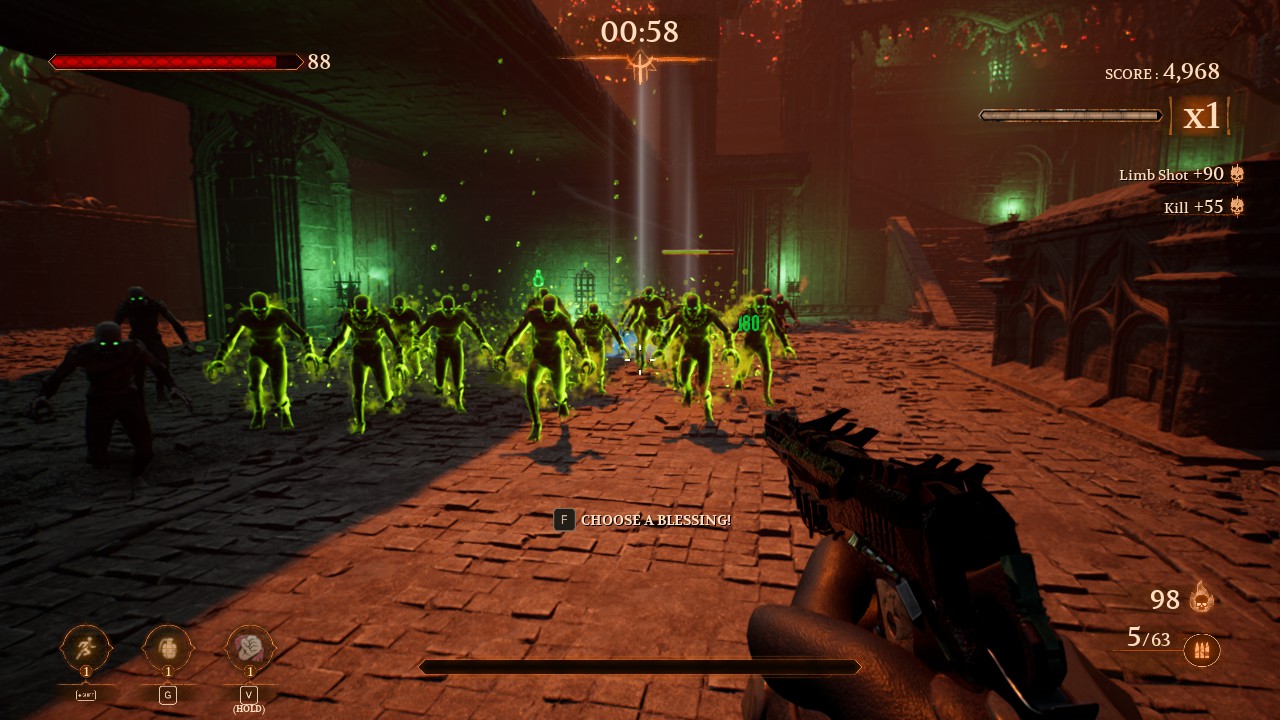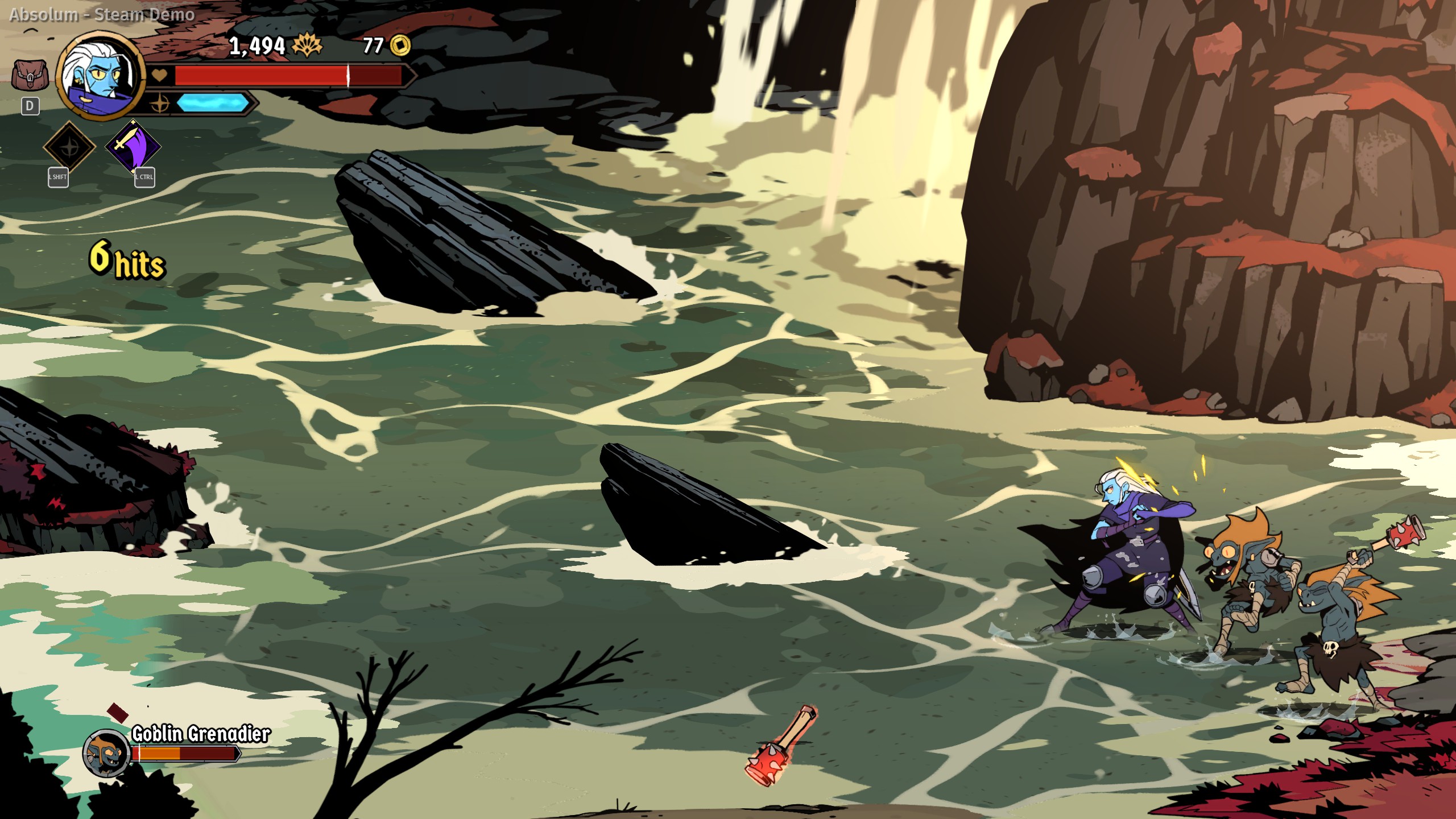Meet Jim, the main protagonist in Path to Serenity, as he embarks on a relaxing adventure to find his true purpose in life. Path to Serenity is a cosy walking simulator that tells an emotional story that aims to depict tranquillity through level design, music, and discovery, guiding Jim towards a better path. Jim finds that time is the enemy, as he struggles to find balance between his career and what really matters to him, including his family.
We had the opportunity to speak with Silviu Soare, the founder of Ludus Pax Studios and solo developer behind Path to Serenity. Building an atmosphere, a relatable narrative, and what makes the upcoming title unique have all been discussed, showing just how much thought has been put into bringing the goals of Path to Serenity to life.
GameScout: Tell us more about Ludus Pax Studios!
Ludus Pax Studios: Thank you for this opportunity to talk to you. My name is Silviu Soare, and I founded Ludus Pax Studios in November 2023 while completing my dissertation. I graduated from the University of the West of Scotland with a first-class degree in Computer Games Development and was twice a court medal finalist. Establishing my own studio had been a long-standing dream, starting during my college years amid the challenges of the pandemic.
Ludus Pax is Latin for ‘Peaceful Games,’ reflecting my vision to create games that evoke emotions and help players feel something—hopefully happiness and peace. My aim is to develop games within a relatively short production cycle and at an affordable price.
When it comes to games, I enjoy a variety of genres, but for me, a strong narrative is essential. Some of my favourite games include the Max Payne series, Warcraft strategy campaign games, Commandos: Behind Enemy Lines, Desperados, Diablo series and many more.
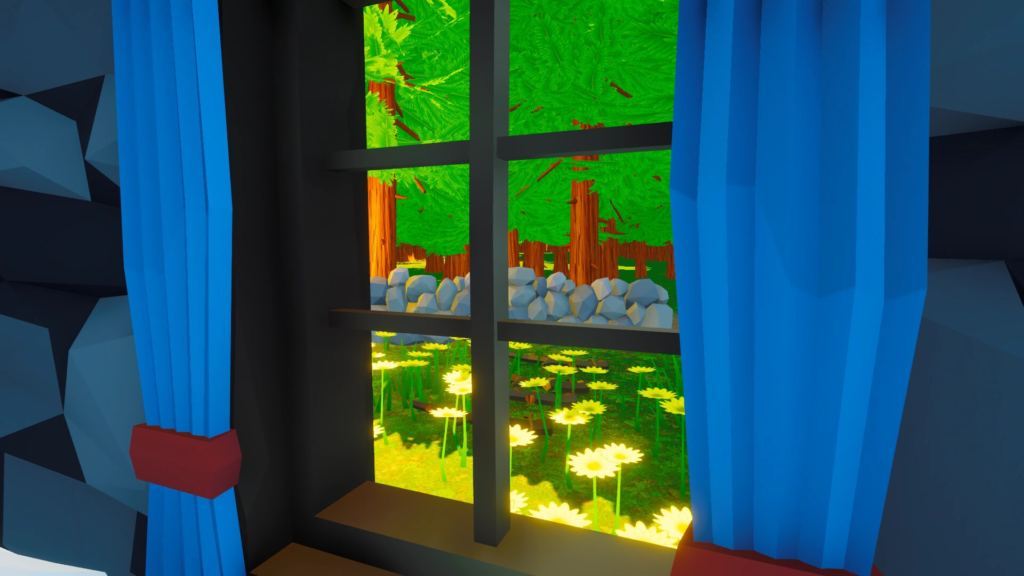
At the beginning of 2024, Ludus Pax Studios launched Rise of the Village Hero, an RPG where you can slay monsters and as the name suggests, become a hero. Seeking out treasure and exploring dungeons contrasts the experience offered by Path to Serenity, a notable shift in direction.
GameScout: Path to Serenity is completely different from your first game, Rise of the Village Hero. What made you develop a walking simulator?
Ludus Pax Studios: I have always wanted to create games that rely heavily on narrative and storytelling through exploration and interactive items. A walking simulator felt like the ideal genre for this, as it allowed me to present the story in the way I envisioned. I didn’t want players to be burdened with numerous tasks or stressful mechanics. Instead, I wanted to tell a story with serious themes while maintaining a cosy, calm, and slow-paced experience.
The reason for choosing a completely different genre from my first game is that I don’t want my studio to specialise in just one type of game. I aim to keep things fresh and engaging by exploring different genres, creating games that inspire me and that I would genuinely enjoy playing, while also hopefully reaching a much wider audience.
GameScout: There are a lot of walking simulators out there. What makes yours stand out from the crowd?
Ludus Pax Studios: There are many walking simulators out there, but what sets Path to Serenity apart is the way it tells its story—through colours, emotions, and interactive elements that evolve as the player progresses. Rather than relying solely on dialogue or traditional cutscenes, the game creates an emotional journey where both Jim and the player experience change through exploration.
The game’s core theme is deeply personal: finding one’s true path in life. Many people, myself included, have faced moments of uncertainty in their careers, wondering if they are on the right path. Path to Serenity aims to resonate with players by reflecting these struggles and encouraging them to pursue what brings them happiness and fulfilment. Through its peaceful world, it offers more than just a story—it provides a feeling.

Although Path to Serenity is a cosy game at heart, it does deal with some sensitive themes such as stress and feeling lost in life. Ensuring the game sticks to its main genre, while touching on these topics feels like it’s going to be a tall task, but comfort will still be key throughout the experience.
GameScout: Path to Serenity is a cosy game, but it does deal with some serious themes. How are you going to make sure you strike a balance between the two, while making sure it remains a relaxing game?
Ludus Pax Studios: Path to Serenity is a cosy game at its core, but it also explores serious themes such as feeling unappreciated, lost time, and questioning life choices—particularly the struggle between career demands and personal happiness. To maintain a relaxing experience, I’ve carefully balanced these themes with elements that create a sense of peace and comfort. Jim’s voice—my own recorded narration—is always calm and soothing, helping to set a reassuring tone. I’ve also included a few light-hearted moments, such as a playful memo in the office about a ‘Friday Pizza Party’ for well-behaved staff. These small humorous touches help to balance the overall theme, particularly in the early game, before the full sense of cosiness takes over when players reach the forest.
The game’s atmosphere plays a key role in this balance. Soothing music, soft colour palettes, and thoughtfully designed environments ensure that, even when exploring serious topics, the experience remains calming. Progression is gentle, encouraging players to explore at their own pace without pressure. The narrative unfolds gradually, blending moments of reflection with the warmth of nostalgia and self-discovery.
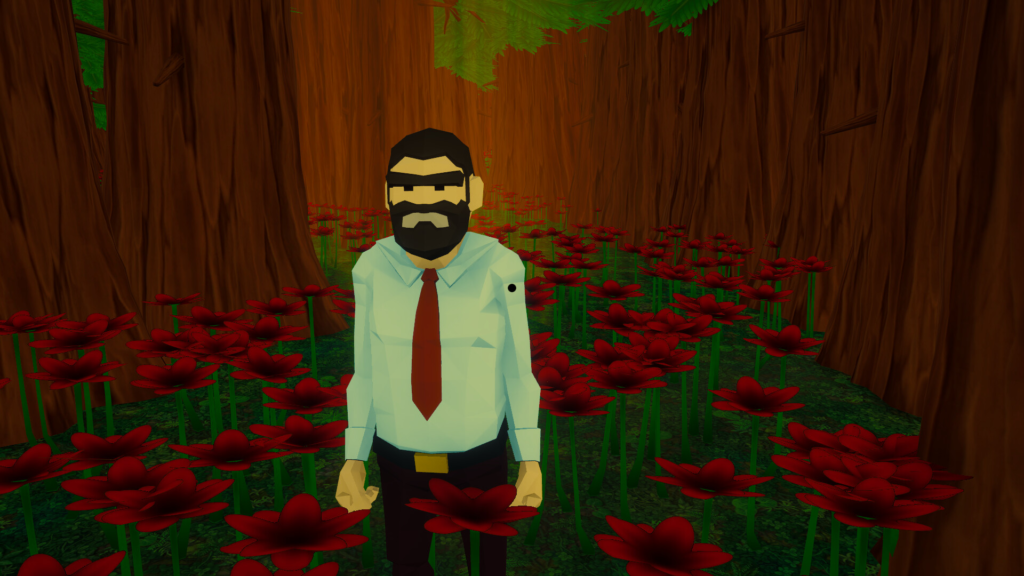
In the demo, it’s clear that Jim is unhappy with his current work-life balance. He expresses disappointment in missing his child’s birthday party, while tensions are high at his place of work. It’s your job to support Jim and make the correct choices in life as he navigates his internal struggles, perhaps something players will be able to resonate with.
GameScout: What kind of player will be able to relate to Jim and how will you ensure players remain motivated to see his story through as he evolves?
Ludus Pax Studios: I believe most of us have, at some point, been stuck in a job or career that didn’t truly fulfil us, yet we continued because of financial responsibilities or personal circumstances. And that’s okay. I often use my mother-in-law as an example—she became a teacher at the age of 57, proving that it’s never too late to pursue what makes you happy.
Path to Serenity is for players who dream of something more, those who feel stuck on the wrong path in life and are searching for a better one, but also for anyone looking for a sense of peace and self-discovery. I hope that players will see themselves in Jim’s journey and feel inspired to follow where it leads.
To ensure players remain motivated to see Jim’s story through, the game encourages exploration at a relaxed pace, with no stress or pressure. Progression flows naturally from one area to the next, allowing players to witness Jim’s growth and self-discovery in a way that feels meaningful. The experience is designed to be engaging yet calming, making players want to continue and see how Jim’s path unfolds.
GameScout: How important will exploration be and what part will it play in the narrative?
Ludus Pax Studios: Exploration plays a key role in Path to Serenity, as it allows players to immerse themselves in the world and uncover elements that enrich the story. The game is built around tasks and objectives, which guide the narrative and give it structure. Players will need to complete these tasks in a certain order, but there’s plenty of room to explore and enjoy the environment along the way.
In the office level, for example, players can talk to NPCs, explore areas to find items of interest, and interact with objects that either trigger an audio cue or display a message. While the main story progresses through tasks and objectives, the narrative is further deepened by these interactable elements scattered throughout the levels. It’s up to the player to discover and explore these elements, adding layers to the story and shaping their experience. However, the story will remain linear, meaning there won’t be multiple choices or branching paths.
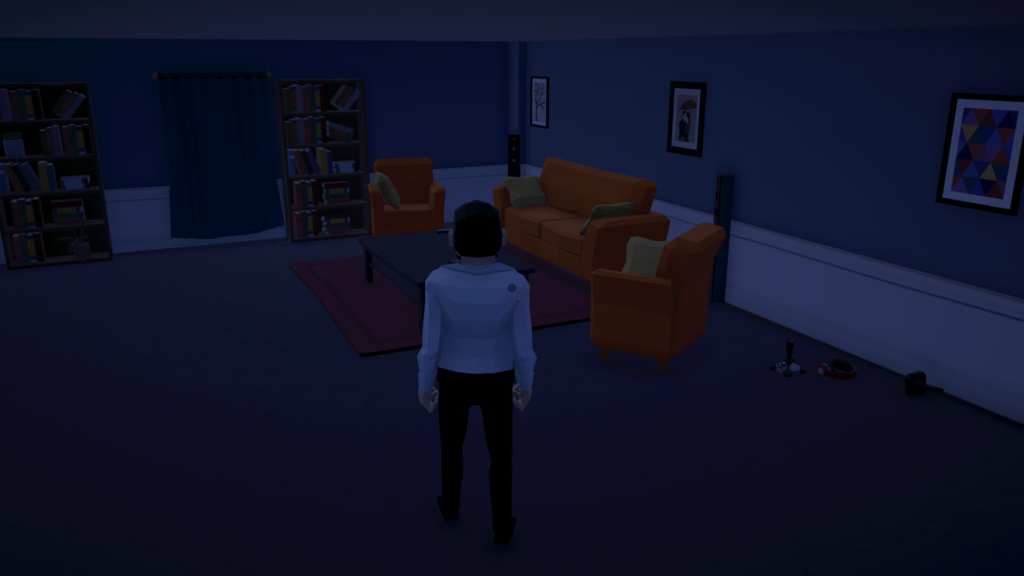
One aspect that stood out to me while playing the Path to Serenity demo was colour. There’s a blue tone at Jim’s house, a grey that engulfs his workplace, before Jim reaches a vibrant forest at the end of the demo. From the get-go, it’s clear that colour will play a significant part in how the narrative is told and in building atmosphere.
GameScout: How will colour be used throughout Path to Serenity and what do you hope to achieve through colour?
Ludus Pax Studios: What makes Path to Serenity unique, in my view, is how colour is used to tell the story and reflect Jim’s emotions in each scene. For example, the grey tones at his workplace represent sadness and emotional detachment, while also displaying subtle details like the bodies of the NPCs. The exaggerated features, such as the large-headed figures, symbolise the arrogance or inflated egos often found in some office environments, adding an extra layer of meaning. In contrast, NPCs with smaller heads represent those who simply come to do their job and leave, while others with long arms might be portrayed as overachievers striving for promotions or recognition.
In the house scene, where Jim feels down due to being away from his loved ones, shades of blue are used to convey his sadness and longing. As players move into the forest, vibrant colours reflect a sense of happiness, rediscovery, and new beginnings. There are no NPCs in the forest for a reason—it’s just Jim and his feelings.
The cabin that Jim’s aunt, Didi, has offered him, but which he never has time to visit in the forest scene, holds different meanings for different people. For me, it symbolises the support my wife gave me in going back to university. For others, it might represent a sister offering a listening ear when you’re troubled or parents who support you through difficult times.
Ultimately, my aim is to use colour not only as a visual tool, but as a way to reinforce the emotions and themes I want to convey throughout Jim’s journey.
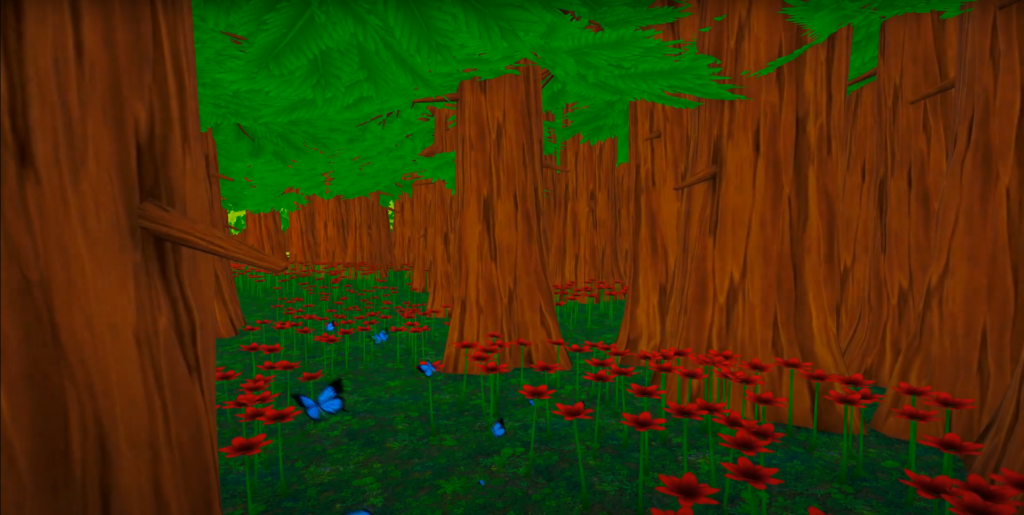
The demo gives players a taste of three areas which are Jim’s house, the office, and forest. Only two of those can be explored in the demo, leaving me wondering how many biomes Path to Serenity will be made up of.
GameScout: How many biomes/levels can players expect to visit in the full game? Which is your favourite and why?
Ludus Pax Studios: Excellent question. To be frank and honest, the number of biomes/levels players can expect to visit really depends on the level of support the game receives. While I deeply appreciate the interest, I also need to run a studio. Last year, I attempted to fund the project through Kickstarter, which would have allowed me to dedicate more time and resources, such as hiring a 3D artist and potential voice actors, among other things. Sadly funding was not reached, so it’s difficult to say how long the game will be.
I feel the final length will depend on the number of wishlists, which has been challenging to grow so far. Hopefully, this article and other efforts will help bring more awareness to the game and what I’m trying to do. Once I feel the game is complete, I’ll have a clearer idea of its length, but for now, it’s hard to put that into a specific number. Currently, the game has four levels planned, but if I feel it needs more to fully tell the story I want, I’ll make that adjustment. It will likely be a shorter game—don’t expect 20-30 hours of gameplay, as I simply don’t have the budget or resources for that.
As for my favourite level, I like all of them in a certain way, as each represents a path I’ve been on at some point. However, I particularly enjoy the cosiness of the forest scenes. They remind me of my childhood holidays in the Romanian mountains with my family, but I also like them because they expand and bring closure to Jim’s story. I feel a personal connection to the path and journey represented in those scenes.
GameScout: How do you expect players to feel at the end of the full game compared to the beginning?
Ludus Pax Studios: I would like players to feel a sense of progression and achievement by the end of the game. Of course, finishing the game itself, but also perhaps seeing something of themselves in Jim’s journey and path. I want them to feel happy, to experience emotions, and to find a sense of peace. If I can achieve that for even a few people, I would be truly happy.
At the start, I hope players will relate to Jim’s feelings of being unappreciated by his boss (we all worked at least one job of that nature in our lives,) and perhaps to his struggle with not having enough time with his loved ones due to work demands. Ultimately, I want them to realise that there is always another journey they can embark on if they choose. If they seek a new path or career, it may be scary, but it is possible. Once they’ve achieved their goals, they too can find their own serenity. I hope that they will feel this sense of possibility and peace by the end.
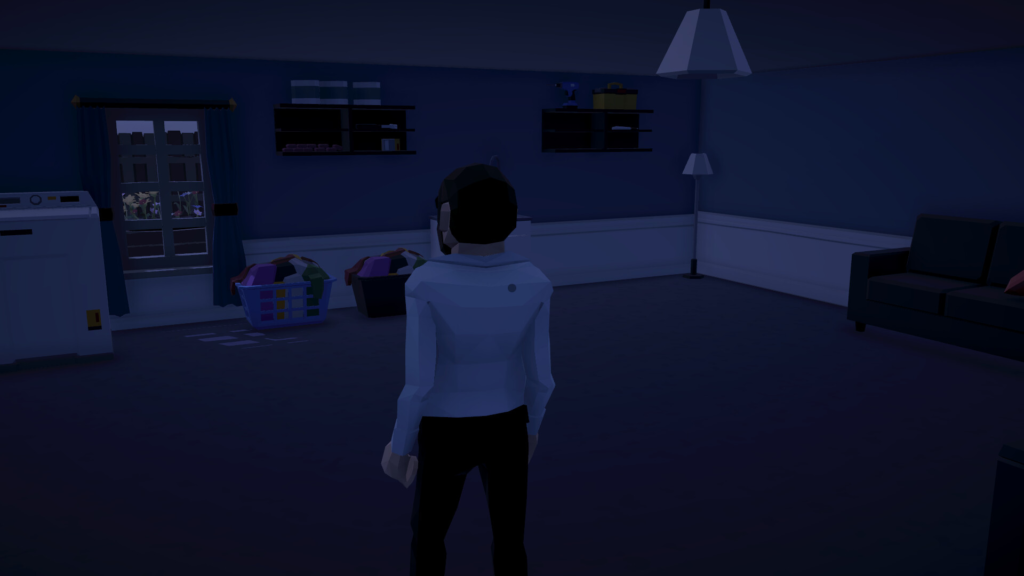
GameScout: Finally, what is one piece of advice you’d give to somebody like Jim?
Ludus Pax Studios: I would say, live your dreams and have the strength to take that path, even though it’s not easy. It’s very scary. I mean, I’m trembling every day, but I love what I do, and it’s so rewarding that it doesn’t even feel like work, even though I put in some crazy hours.
I would like people to know that there is a bit of Jim in most of us. Not everyone has the clarity to know exactly what they want to do, and some spend much of their lives searching for it. Some even give up along the way. But, if I could give any advice, I would say: believe in yourself and take that new path. It’s crazy, but in the end, you will find so much happiness.
The Path to Serenity demo is live on Steam and Itch.io until March 4, 2025, and will be available during the Steam Next Fest. There’s an opportunity to give feedback and make suggestions within the demo itself.
Keep up with Path to Serenity by wishlisting the game on Steam and following Ludus Pax Studios via your preferred social media channels:



